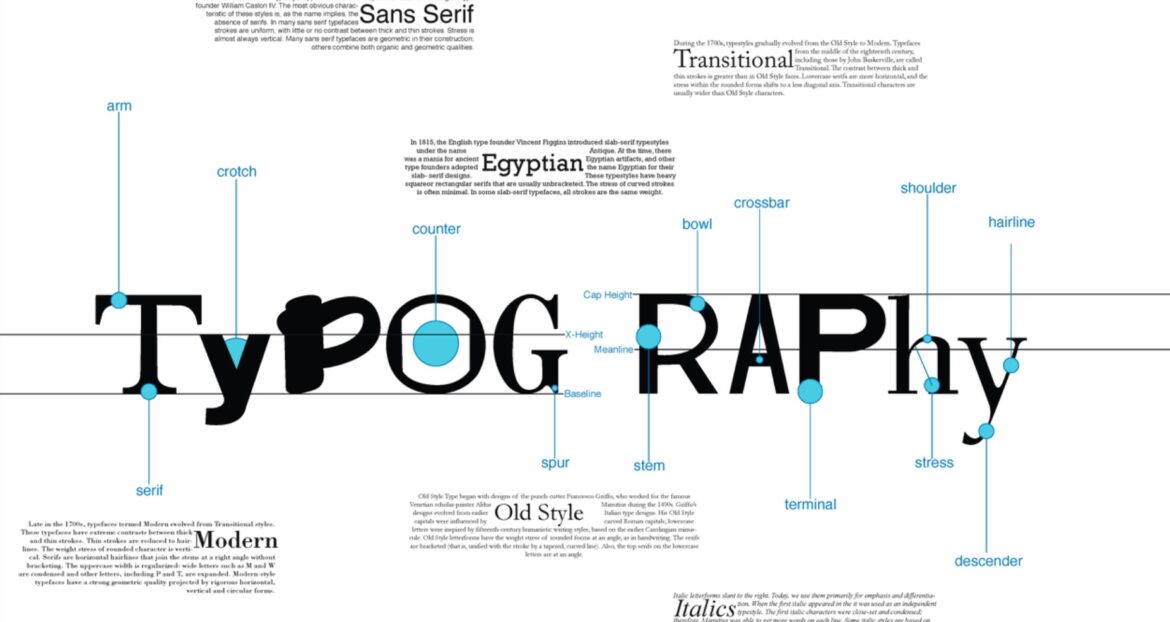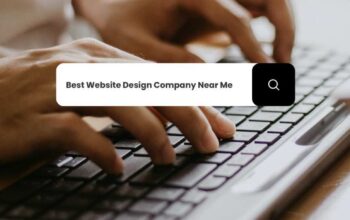
In today’s digital age, having a visually appealing and user-friendly website is crucial for any business or individual looking to establish an online presence. One of the key elements that contribute to the overall aesthetics and usability of a website is typography. Effective website typography techniques can help create a balanced layout that engages visitors, enhances readability, and conveys the intended message in an impactful way. In this article, we will explore various techniques and best practices for creating a balanced layout with effective website typography.
Understanding the Importance of Typography
Typography plays a significant role in web design as it directly affects how users perceive and interact with the content. It encompasses the selection of fonts, font sizes, line spacing, alignment, and other factors that influence the visual appearance of text on a web page. By paying attention to typography, web designers can create a harmonious visual hierarchy that guides users’ attention and enhances the overall user experience.
Choosing the Right Fonts for Your Website
Creating a Balanced Layout with Effective Website Typography Techniques
The first step in creating a balanced layout with effective typography is choosing the right fonts for your website. Fonts can evoke specific emotions and set the tone for your content. When selecting fonts, consider your website’s theme, target audience, and the message you want to convey. It’s recommended to use a combination of serif and sans-serif fonts to create visual contrast and enhance readability.
Serif Fonts
Serif fonts are characterized by small lines or strokes attached to the ends of the main strokes in a letter. They are often associated with tradition, elegance, and formality. Serif fonts work well for body text and lengthy paragraphs as they improve legibility and guide readers’ eyes along the lines. Some popular serif fonts include Times New Roman, Georgia, and Baskerville.
Sans-Serif Fonts
Sans-serif fonts are a popular choice for website typography due to their clean and modern look. They are characterized by their absence of small lines or strokes attached to the ends of the main strokes in a letter. Sans-serif fonts offer excellent legibility at smaller sizes, making them suitable for headings, subheadings, and short snippets of text.
Here are some popular examples of sans-serif fonts:
| Font Name | Description |
| Arial | A versatile sans-serif font known for its simplicity |
| Helvetica | Widely used in print and digital media for its neutrality |
| Verdana | Designed specifically for on-screen legibility |
| Roboto | A modern and widely used font in mobile app interfaces |
| Open Sans | Known for its wide range of weights and readability |
Sans-serif fonts are often preferred for digital screens due to their readability and clean appearance. They provide a contemporary and straightforward aesthetic that aligns well with modern web design trends. When using sans-serif fonts, consider the overall style and tone of your website to ensure a cohesive visual identity.
Remember to choose a sans-serif font that is easy to read and aligns with your website’s branding and target audience. Experiment with different font weights and sizes to create visual hierarchy and emphasize important elements. Sans-serif fonts can help create a balanced layout and contribute to an engaging user experience.
Establishing Hierarchy with Font Sizes and Styles
Creating a visual hierarchy is crucial to guide users’ attention and emphasize important elements on your website. Font sizes and styles can be used strategically to establish this hierarchy and create a balanced layout.
Headings and Subheadings
When it comes to headings and subheadings, it’s essential to choose font sizes that are significantly larger than the body text. This contrast helps users quickly identify the main sections and navigate through the content. Utilize heading tags (H1, H2, H3, etc.) to structure your content and make it more search engine friendly.
Body Text
For the body text, aim for a font size that is comfortable to read. The recommended range is typically between 14 and 16 pixels for desktop screens, and slightly larger for mobile devices. Additionally, consider adjusting the line spacing (leading) to ensure adequate legibility. Proper spacing between lines can prevent the text from appearing cramped and enhance readability.
Optimizing Line Length for Readability
The line length refers to the horizontal span of text from the left to the right edge of a block. An optimized line length is crucial for readability and prevents users from getting lost or skipping lines while reading.
Ideal Line Length
The ideal line length refers to the optimal number of characters per line in a block of text. It is an important factor to consider when designing your website’s typography for optimal readability and user experience.
Why is Line Length Important?
Line length affects how easily readers can scan and comprehend the content. If the line length is too short, readers may have to frequently move their eyes from the end of one line to the beginning of the next, which can be disruptive and hinder reading flow. On the other hand, if the line length is too long, readers may lose track of the line they are reading, leading to eye strain and reduced comprehension.
Recommended Range
The recommended range for line length is typically between 50 to 75 characters per line, including spaces. This range strikes a balance between providing enough space for comfortable reading and preventing lines from becoming too long or too short.
Factors to Consider
Several factors should be taken into account when determining the ideal line length for your website’s typography:
- Font Size: The size of the font you choose will impact the number of characters that can fit on a line. Larger font sizes may require shorter lines to maintain readability, while smaller font sizes may allow for slightly longer lines.
- Reading Environment: Consider the devices and platforms on which your website will be accessed. Line length may need to be adjusted for optimal readability on desktop screens, laptops, tablets, or mobile devices.
- Content Type: The type of content on your website can also influence the ideal line length. Longer, more complex paragraphs may benefit from shorter lines to aid comprehension, while shorter snippets of text or bullet points may allow for slightly longer lines.
Balancing Line Length and White Space
While adhering to the ideal line length range is important, it’s equally crucial to consider the overall layout and spacing of the text on your website. White space, also known as negative space, refers to the empty areas between paragraphs, lines, and other elements on a web page.
Sufficient white space around the text enhances readability and makes the content more visually appealing. It provides breathing room for readers’ eyes and helps them focus on the text without feeling overwhelmed. Adjusting margins and padding can help achieve the right balance between the text and white space, complementing the ideal line length and contributing to a balanced layout.
In conclusion, selecting the ideal line length for your website’s typography is crucial for readability and user experience. Aim for a range of 50 to 75 characters per line and consider factors such as font size, reading environment, and content type. Additionally, pay attention to the balance between line length and white space to create a visually pleasing layout that engages your readers.
Enhancing Readability with Contrast and Alignment
Apart from font selection, font sizes, and line length, contrast and alignment also contribute significantly to the readability of your website’s typography.
Contrast
Contrast refers to the difference in visual properties between different elements. In the context of typography, contrast can be achieved through color, font weight, and size. Use high contrast between the text and the background to ensure readability. Avoid using light-colored text on light backgrounds or dark-colored text on dark backgrounds, as it can strain the eyes and make the text difficult to read.
Alignment
Text alignment plays a vital role in creating a visually pleasing and balanced layout. There are three primary text alignments: left-aligned, center-aligned, and right-aligned. Left-aligned text is the most commonly used alignment for body text as it provides a smooth reading experience. Center-aligned text is often used for headings or short snippets to draw attention. Right-aligned text should be used sparingly as it can be challenging to read, especially for extended paragraphs.
FAQ
Q: How can I choose fonts that complement each other?
A: When choosing fonts, consider selecting a combination of serif and sans-serif fonts that have similar characteristics. Look for fonts that share common traits in terms of proportions, stroke thickness, and overall style. This will help create a cohesive and harmonious typography system for your website.
Q: Should I use decorative fonts for body text?
A: It is generally recommended to avoid using decorative fonts for body text. Decorative fonts often have intricate and elaborate designs that can make them challenging to read, especially in longer paragraphs. Reserve decorative fonts for display purposes or short snippets of text, and use more legible fonts for body text.
Q: How can I ensure accessibility for users with visual impairments?
A: To ensure accessibility, make sure to choose fonts that are legible and have sufficient contrast with the background. Use font sizes that can be easily scaled up without causing the text to overflow or overlap with other elements. Additionally, provide alternative text descriptions for images and consider implementing accessibility features like screen reader compatibility.
Q: Can I use custom fonts on my website?
A: Yes, you can use custom fonts on your website by utilizing web font services or hosting the font files on your server. However, keep in mind that using custom fonts may increase the loading time of your website if not optimized correctly. Ensure that the chosen font files are compressed and served with caching to minimize the impact on performance.
Q: Are there any SEO considerations related to typography?
A: While typography itself doesn’t directly impact SEO, it indirectly affects user experience, which is a crucial factor for search engine rankings. Well-designed typography that enhances readability and user engagement can contribute to longer visit durations and lower bounce rates, which are positive signals for search engines.
Q: How can I test the readability of my typography?
A: You can test the readability of your typography by conducting usability tests with representative users. Ask for feedback on the legibility, font sizes, line lengths, and overall reading experience. Additionally, tools like readability scores and contrast checkers can provide insights into the accessibility and readability of your typography.
Creating a balanced layout with effective website typography techniques is essential for engaging visitors, conveying your message, and enhancing user experience. By carefully selecting fonts, establishing a clear hierarchy, optimizing line lengths, and enhancing readability with contrast and alignment, you can create visually appealing and user-friendly websites. Remember to consider the target audience, accessibility, and SEO implications while designing your website’s typography. With attention to detail and continuous refinement, you can achieve a harmonious typography system that leaves a lasting impression on your website visitors.



